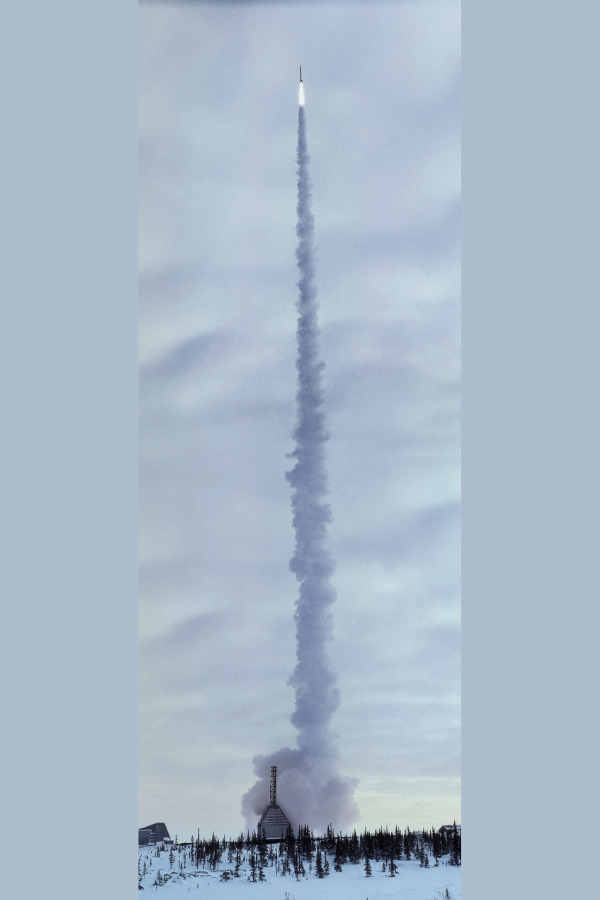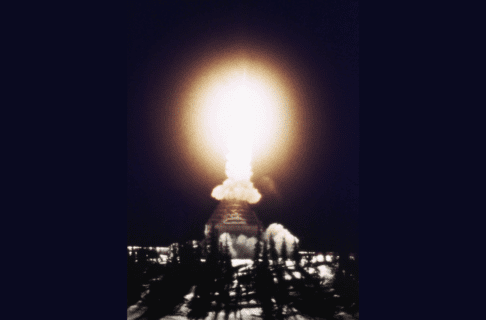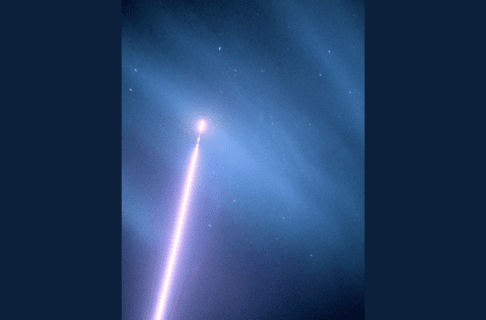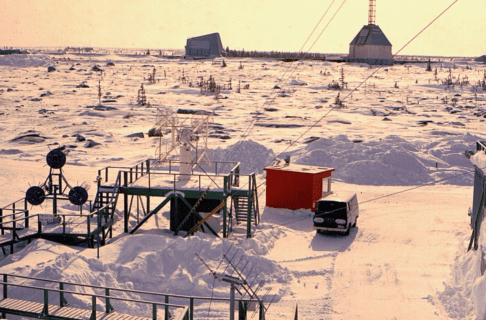By Tamika Reid, Volunteer Researcher, and Roland Sawatzky, Curator of History, Manitoba Museum
Churchill, Manitoba is well known for its scenic arctic landscape, polar bears, and vibrant northern lights, but did you know that Churchill was once home to the most active rocket range in Canada?
While the Churchill Rocket Range was in regular operation, between 1957 and 1985, Churchill hosted an international array of scientists, technicians, students, contractors, and military personnel. Through their pioneering studies, Manitoba has a permanent place in the history of early rocket development, and research into the mysteries of the upper atmosphere and aurora borealis. This work enriched humanity’s understanding of the thin layer surrounding our fragile planet.
Ken Pilon worked at the Churchill Rocket Range in the early 1980s as a meteorologist, supporting winter launches by providing crucial wind and temperature information. The northern climate made blizzards and high surface wind speeds a concern for launch trajectory. Pilon worked with a team of up to 60 people. “The hours and working conditions were extreme at times, but I never heard a single complaint from any of them,” said Pilon.

A recent episode of Dome@Home, a bi-weekly virtual program hosted by Planetarium Astronomer, Scott Young, featured Pilon’s artifacts and images. In response, a viewer from Colorado, Dr. Ron Estler, contacted the Museum and shared his experience as a graduate student at the Churchill Rocket Range, along with more photographs.
For six weeks in 1975, Estler was part of an Aerobee 150 rocket launch funded by NASA, through John Hopkins University. Studying Chemical Physics, Estler was tasked with overseeing electron spectrometers to be launched with the Aerobee, for analyzing the energy of electrons.
Having visited Churchill last March for the first time since working there as a student, Estler is already planning another trip north. On the way, he plans to visit the Manitoba Museum. “It will remind me that I played a very small role in something much bigger and fundamentally important to the knowledge of our own planet,” said Estler.
The Manitoba Museum is planning a future exhibit on the Churchill Rocket Range to highlight stories like these, and the role of the Rocket Range in space and science research. You can see a Black Brant V, a type of rocket also used at the Churchill Rocket Range, in the Science Gallery at the Manitoba Museum.







